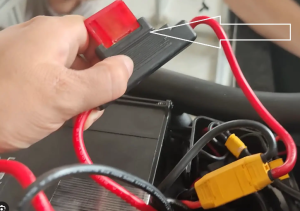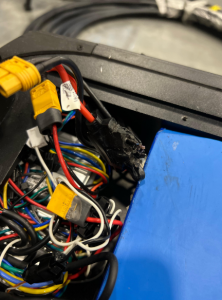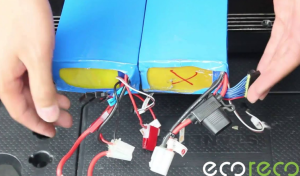Electric scooters typically have a fuse, often rated between 5A to 30A, depending on the scooter’s specifications. with the correct fuse type and rating, following safety guidelines, you can replace it yourself.
Introduction to Electric Scooter Fuses
Understanding Fuses in Electric Scooters Fuses in electric scooters play a crucial role in preventing electrical damage and ensuring rider safety. They act as a safety device that interrupts the power supply when electrical current exceeds a safe level. If a scooter is designed to handle 10A of current, but due to a fault it draws 15A, the fuse will blow to prevent damage. This highlights the fuse’s function as a protective component against electrical overloads, short circuits, and potential hazards.
Importance of Fuse Size and Type The size and type of the fuse are paramount for the efficient operation of an electric scooter. Choosing the wrong fuse size can lead to frequent blowouts or, worse, damage to the scooter’s electrical system. A fuse too small for the scooter’s current requirements might blow even under normal conditions, causing inconvenience and potential downtime. On the other hand, a fuse that’s too large won’t protect the scooter effectively, as it might not blow soon enough to prevent damage. Typically, electric scooters use fuses rated between 5A to 30A, depending on the scooter’s power specifications and motor size.
Key Factors in Fuse Selection
- Current Rating: This is the maximum current the fuse can handle before blowing. A scooter with a 500W motor might require a fuse rated at around 20A, considering the power (P) equation P = IV, where I is current and V is voltage.
- Voltage Rating: The fuse should be capable of handling the scooter’s maximum operating voltage. For scooters operating at 48V, the fuse must be rated for at least this voltage.
- Response Time: Fuses have different response times to overcurrent. Fast-acting fuses blow quickly for sensitive components, while slow-blow fuses tolerate temporary surges, ideal for motors that draw high current at startup.
- Physical Size: The fuse must physically fit in the scooter’s fuse holder. Common sizes include standard blade fuses and mini fuses.
Comparative Example
Consider two electric scooters: Scooter A with a 250W motor and Scooter B with a 1000W motor. Scooter A may use a 10A fuse, adequate for its lower power demands. Scooter B, with a higher power requirement, might need a 25A fuse to handle the increased current draw without blowing unnecessarily.
By selecting the correct fuse size and type, riders can ensure their electric scooter operates safely and efficiently, preventing costly repairs and ensuring longevity. Quality materials and proper fuse design contribute significantly to the overall performance and safety of the scooter.
For detailed information on electric scooters and their components, you can refer to the Electric Scooter page on Wikipedia.
Identifying the Fuse in Your Electric Scooter
Locating the Fuse Compartment
To locate the fuse compartment in an electric scooter, first, consult the scooter’s manual as it provides the exact location and instructions. Generally, the fuse compartment is found in areas like under the deck, near the battery, or close to the motor. In many scooter models, the fuse compartment is situated beneath the deck, requiring the removal of a few screws to access. Visibility and accessibility are key; manufacturers design these compartments to be relatively easy to locate for maintenance purposes.
Types of Fuses Used in Electric Scooters
Electric scooters typically use one of two types of fuses: blade fuses and glass tube fuses. The choice depends on the scooter’s design and power requirements.
Blade Fuses:
- Common in newer and more advanced scooter models.
- Compact and easy to install.
- Offer a wide range of amperage ratings, suitable for different scooter models.
Glass Tube Fuses:
- Often found in older or simpler scooter models.
- Larger and more visible, making it easier to check their condition.
- Have a slower blow time compared to blade fuses, which can be advantageous for certain scooter types.
Comparison Table:
| Feature | Blade Fuse | Glass Tube Fuse |
|---|---|---|
| Design | Compact, modern | Larger, traditional |
| Installation | Easy to plug in | Requires careful placement |
| Visibility | Less visible | Easily inspected for damage |
| Amperage Range | Wide range, suitable for high-power scooters | Limited range, often for lower power scooters |
| Blow Time | Fast-acting, suitable for sensitive components | Slower, can tolerate temporary surges |
Each fuse type has its advantages and limitations. Blade fuses are more common in modern scooters due to their compact size and ease of use, while glass tube fuses are simpler and easier to inspect but are generally bulkier and slower to react.




